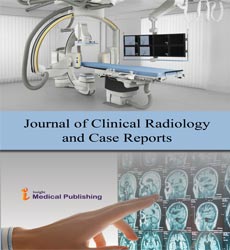Prediction of Seizures in Patients
Alexander Birbrair*
Department of Pathology, Federal University of Minas Gerais Belo Horizonte, MG, Brazil
- *Corresponding Author:
- Alexander Birbrair Department of Pathology, Federal University of Minas Gerais Belo Horizonte, MG, Brazil, Email: birbrair@xyz.com
Received Date: November 03, 2021; Accepted: November 17, 2021; Published: November 24, 2021
Citation: Alexander B (2021) Prediction of Seizures in Patients. J Clin Radiol Case Rep Vol.5 No.5: e001
Abstract
Spasms and insanity (DT) are viewed as genuine manifestations of liquor withdrawal. Delayed hospitalization and genuine difficulties connected with liquor withdrawal are answerable for the expanded expense and utilization of clinical and social assets. We thought about the distinctions on quantitative electroencephalography (EEG) in patients after liquor withdrawal seizures (AWS; n = 13), acted in the emergency unit 48 h of confirmation medical clinic, and age-and sex-matched solid controls. We likewise explored the prognostic worth of quantitative EEG, for the improvement of liquor DT after AWS in a review case-control study. The ghastly force of each band recurrence and the theta band to alpha band (TAR) proportion in the EEG were dissected. The beta recurrence and the alpha recurrence band power were altogether higher and lower, individually, in patients than in age and sexmatched sound controls.
Introduction
Spasms and insanity (DT) are viewed as genuine manifestations of liquor withdrawal. Delayed hospitalization and genuine difficulties connected with liquor withdrawal are answerable for the expanded expense and utilization of clinical and social assets. We thought about the distinctions on quantitative electroencephalography (EEG) in patients after liquor withdrawal seizures (AWS; n = 13), acted in the emergency unit 48 h of confirmation medical clinic, and age-and sex-matched solid controls. We likewise explored the prognostic worth of quantitative EEG, for the improvement of liquor DT after AWS in a review case-control study. The ghastly force of each band recurrence and the theta band to alpha band (TAR) proportion in the EEG were dissected. The beta recurrence and the alpha recurrence band power were altogether higher and lower, individually, in patients than in age and sexmatched sound controls. In AWS patients with DTs, the relative beta3 power was lower, especially in the left front facing region, and the TAR was fundamentally higher in the focal direct than in those without DTs. Quantitative EEG showed neuronal volatility and diminished mental exercises normal for AWS patients related with liquor withdrawal state and we exhibited that quantitative EEG additionally may be a useful apparatus for recognizing patients at high gamble of creating DTs during an alcohol dependence period. Alcohol withdrawal seizures (AWS) happen in alcohol dependent people, regularly 1â??3 days after the last beverage, top at around 48 hours, and are especially diminished by day 5â??7 of forbearance. As a bounce back peculiarity, AWS are connected to the unexpected discontinuance of delayed inebriation and liquor misuse. Liquor follows up on the cerebrum by means of a few instruments. During liquor restraint, NMDA receptor work is upgraded, GABAergic transmission is decreased, and the dopaminergic framework is deregulated, all of which lead to withdrawal side effects and signs. Alcohol withdrawal manifestations incorporate quake, a sleeping disorder, sickness or heaving, transient pipedreams or deceptions, psychomotor tumult, nervousness, and seizures. Seizures and wooziness are perceived as extreme types of alcohol withdrawal side effects. Past surveys showed that 4-15% of individuals with liquor reliance (and up to 20-30% in conceded patients) foster DTs or seizures. Withdrawal seizures might happen 12-48 h after the last beverage, and successively some foster ridiculousness tremens (DTs) inside. DT, otherwise called withdrawal daze, is the unexpected beginning of fluctuating disarray, confusion, and encephalopathy, including pipedreams. It is described by extreme hyper adrenergic states and autonomic aggravations, including hyperthermia, heart arrhythmias, withdrawal-related spasms, or corresponding ailments, which might prompt passing. The 8-year death rate after an episode of TD was 30.8% (danger proportion 1.38, 95% CI 0.434.48), practically identical to that of patients with extreme threat. Clinically huge indicators of the event of DT, for example, history of DT, low serum potassium, low platelet count, presence of primary mind harm, and raised pulse on 100- 120 bpm7.8. In past reports, hospitalization with seizures each year and old age (>70 years) expanded the gamble of mind flights and daze as a withdrawal complexity in everyday medical clinics. The greatest risk for insanity is an expanded number of days since the last beverage. In this manner, there is no broad agreement on which variables increment the gamble of DTs.
Acknowledgement
None
Conflict of Interest
There is no conflict of interest between any parties in publishing this article.
Open Access Journals
- Aquaculture & Veterinary Science
- Chemistry & Chemical Sciences
- Clinical Sciences
- Engineering
- General Science
- Genetics & Molecular Biology
- Health Care & Nursing
- Immunology & Microbiology
- Materials Science
- Mathematics & Physics
- Medical Sciences
- Neurology & Psychiatry
- Oncology & Cancer Science
- Pharmaceutical Sciences
